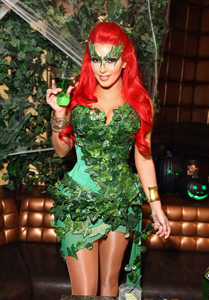Product Description
Louviere & Vanessa, Chlorofemina, Neque (from “As if…”) 2005 Mixed media, pigment print, wax mixed with pigment, Edition: 2/5 (printed in 2008)



JEFF LOUVIERE (b.1971) USA
VANESSA S. BROWN (b.1970) USA
Chlorofemina, Neque (from “As if…”) 2005
Mixed media, pigment print, wax mixed with pigment
Edition: 2/5 (printed in 2008)
Signed: Louviere and Vanessa
Image H: 53” x W: 45”
Price: $35,000
“By collaborating, we put ourselves in the midst of alternating currents of decision and production, action and responsibility, decay and clarity-capturing the moment between ‘has been ‘ and ‘what will be.'”
Jeff Louviere has a background in graphic design and art direction, winning several national and international awards. Vanessa S. Brown was 12 when she made her first photographs, and was exhibiting at 17. Her work gained international acclaim even before she earned her BFA from Rochester Institute of Technology. Louviere received his MFA from Savannah College of Art and Design, and it was in Savannah, Georgia that Jeff and Vanessa met. Their first collaboration was a series of photo storyboards for a film they had written together. The two moved to New Orleans in 1998 and have been exhibiting nationally ever since.
Jeff Louviere and Vanessa Brown have been collaborating on photographic images and movies since they first met in the mid-90s. Under the moniker Louviere+Vanessa they have created moody, atmospheric visuals with various equipment, including scanners, 8mm film, destroyed negatives, wax and even blood, utilizing the Holga medium format camera, altering the negatives and creating assemblages
Louviere & Vanessa, Chlorofemina, Neque (from “As if…”) 2005 Mixed media, pigment print, wax mixed with pigment, Edition: 2/5 (printed in 2008)
WERNER ROHDE (1906-1990) Germany
Mask c. 1920s
Gelatin silver print
Signed on the back of the photo: Werkbundausstellung “Film und Foto” (typed on label); 9.) 9/ (in ink and red crayon); Kupfer ofun Rourk 60 m R 10.5 x 14.5 cm / ump ubonpposhm bu 6/5 10088 (all in pencil script); fmlg-Rohde Woopswerk (in pencil); Werner Rohde Malen Breuien Oobben 58 (ink script)
H: 21 7/16” x W: 18 13/16” (framed)
Price: $17,500
Werner Rohde’s visual play with the animate and inanimate draws him close to the aesthetics of the surrealists while maintaining a strong alignment with Germany’s new-vision avant-garde. Rohde experimented widely with double exposures, photomontage, perspective and dramatic lighting that reflected his interest in filmic effects. The son of a glass painter (a medium he would turn to later in life), Rohde took up photography during his studies at the Arts and Craft School in Halle. Like Kesting, Willy Zielke and Kretschmer, he participated in the 1929 ‘Film und foto’ exhibition in Stuttgart that remains one of the historical focal points for Germany’s new photographic vision. Despite this early recognition of his work, Rohde fell into obscurity after the war until the rediscovery of his photographs in the mid 1970s. Rohde’s fascination with the play between life and lifeless, animate and inanimate, has strong reverberations with surrealism. Masks, mannequins and paper models were used in his photographs to illuminate the uncanny. They were also employed in his self-portraiture in which he mimicked his idol Charlie Chaplin. These techniques of visual illusion provided a mnemonic tool for the images of his wife in which she is posed and photographed to resemble a doll or mannequin. In the act of art imitating life, ‘Wachspuppenkopf’ is uncanny in its mimicry of the human form with realistic teeth, eyes, skin and even the unusual detail of small wrinkles under the eyes. The downward angle, lighting and odd doubling of the neckline utilizes standard surrealist methods to infer life and movement.
EUGENE OMAR GOLDBECK (1892-1986) USA
Indoctrination Division, Air Training Command, Lackland Air Base, San Antonio, Texas, July 19, 1947
Signed: Natural Photo and News Service EO Goldbeck © photo (on matting); LR Conner EG 81
Size: H: 19” x W: 16 ½”; Size (with mat): H: 24” x W: 20”
Framed: H: 26 5/8” x W: 23 7/8”
Price: $6,500
Known as the “unofficial photographer of America’s military,” Goldbeck conducted three-year tours to all of the major military bases in and outside of the United States until demand diminished for military group photos after World War II. He pushed the limits of his craft by working with larger and larger groups in striking designs. For his record setting group shot, in which 21,765 men were arranged to represent the Air Force insignia, he spent more than six weeks building a 200-foot tower and making blueprints of the formation and attire of his subjects. The photograph was subsequently featured in Life magazine and became the most frequently reproduced of his prints.
